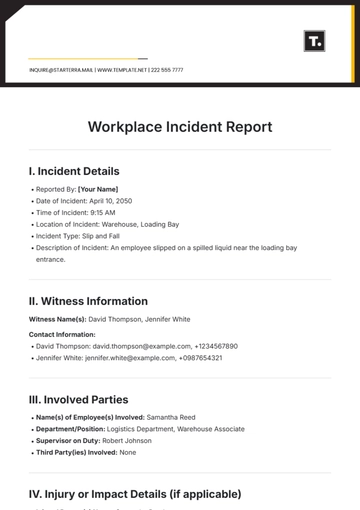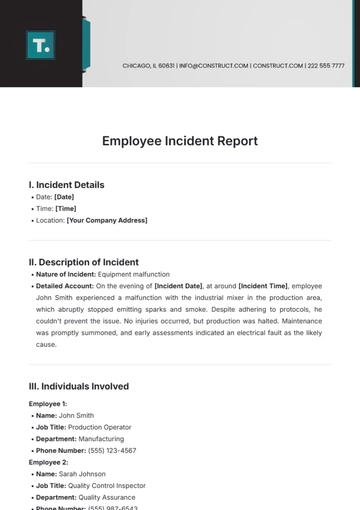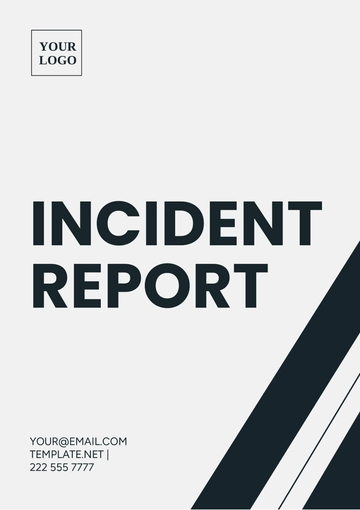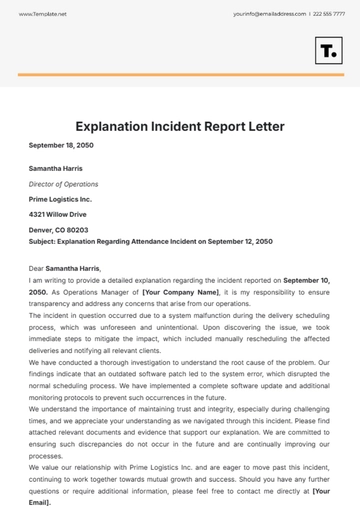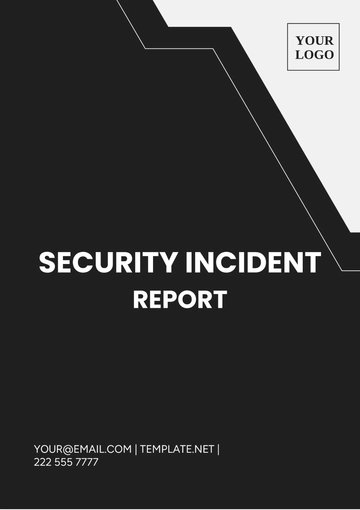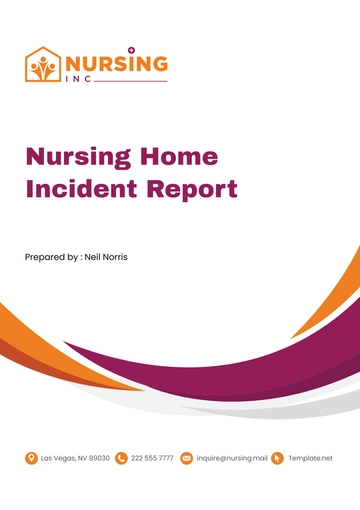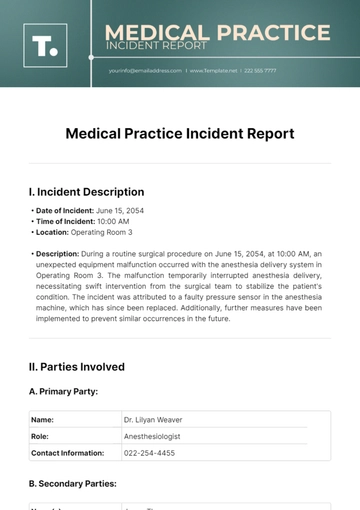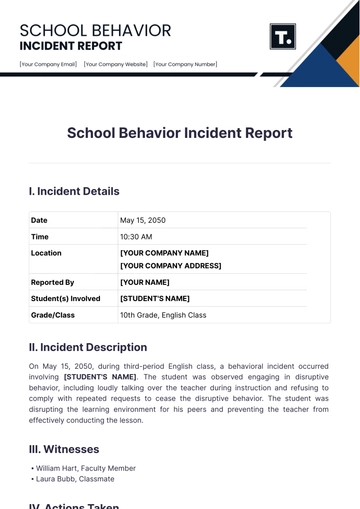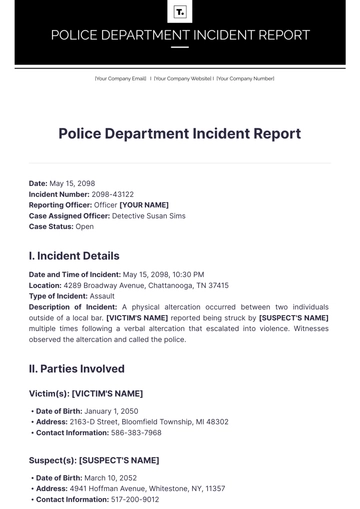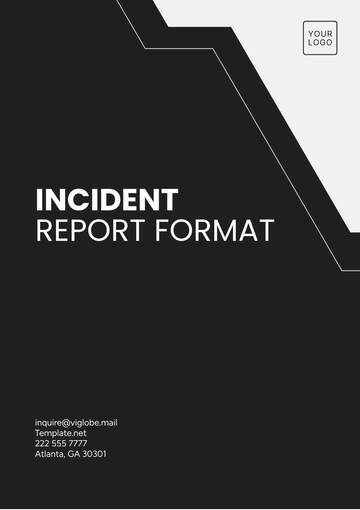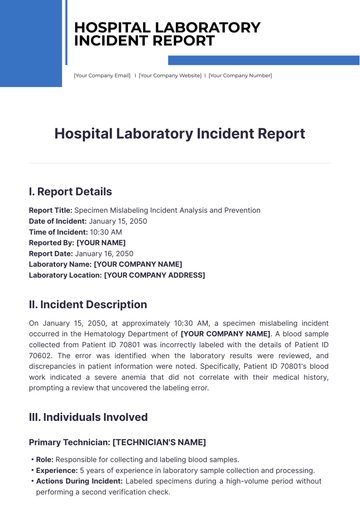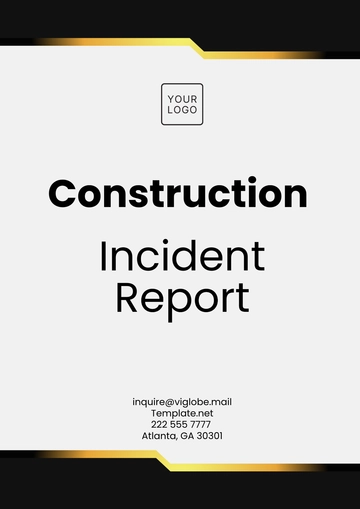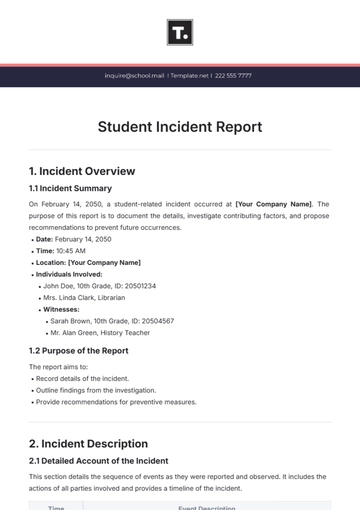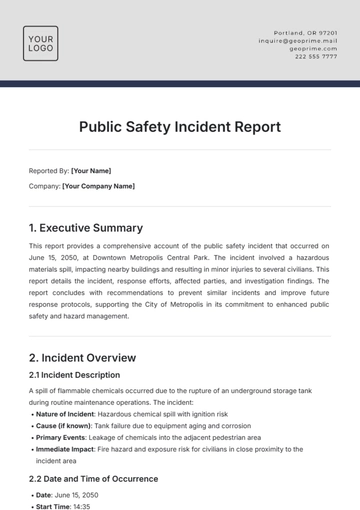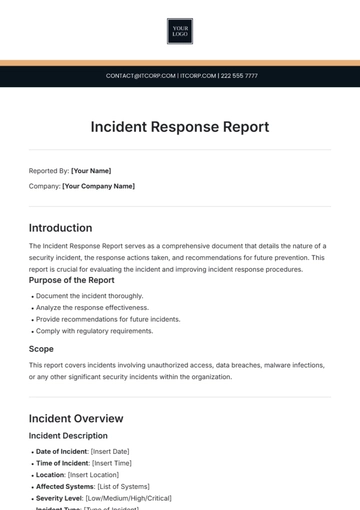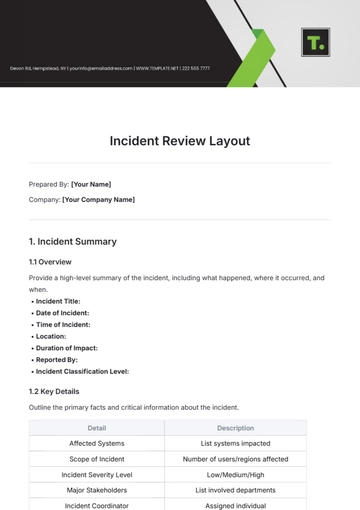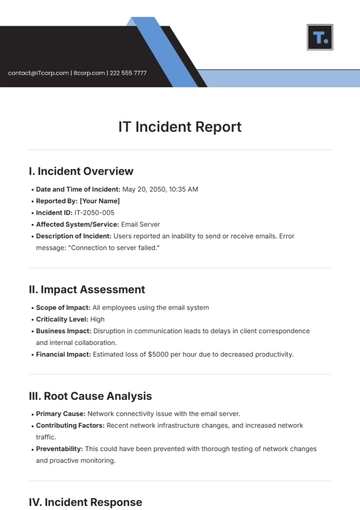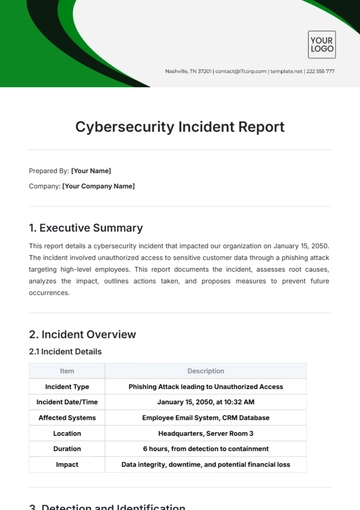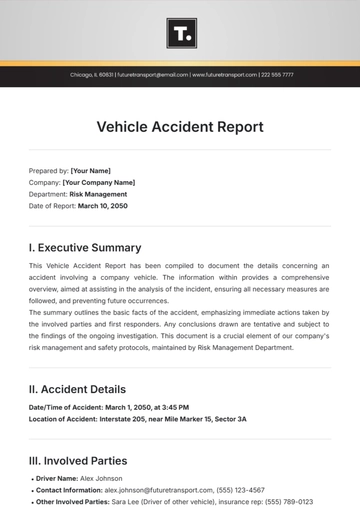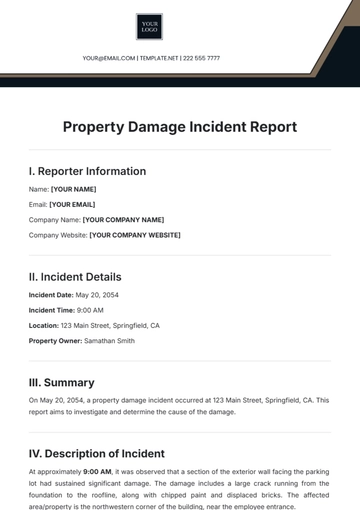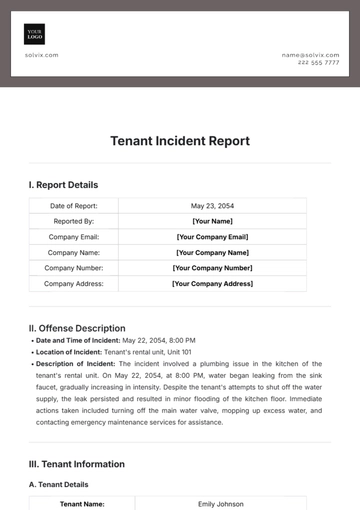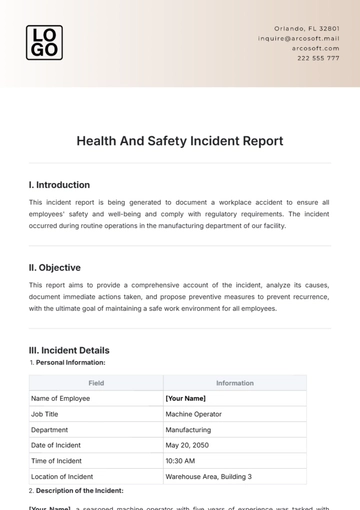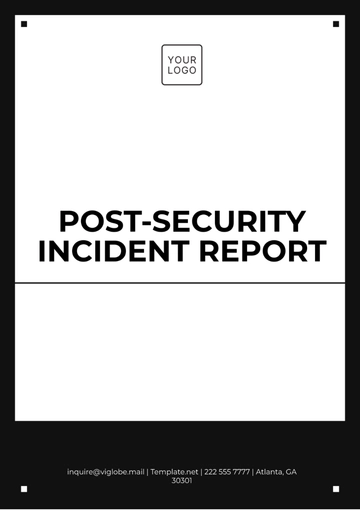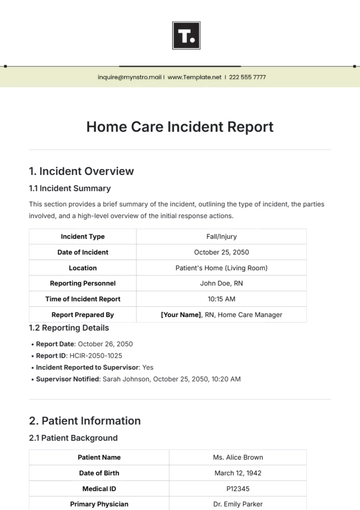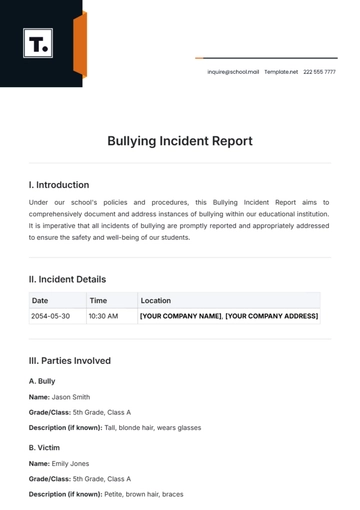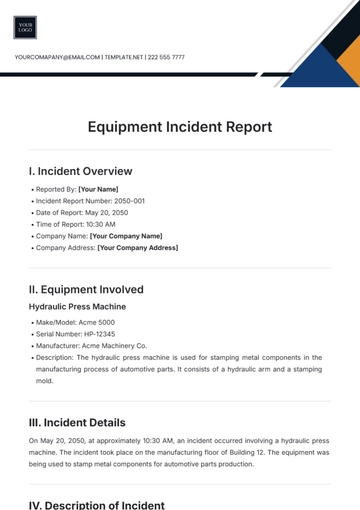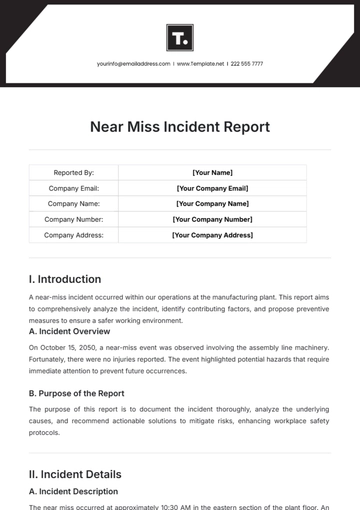Free Workplace Incident Report
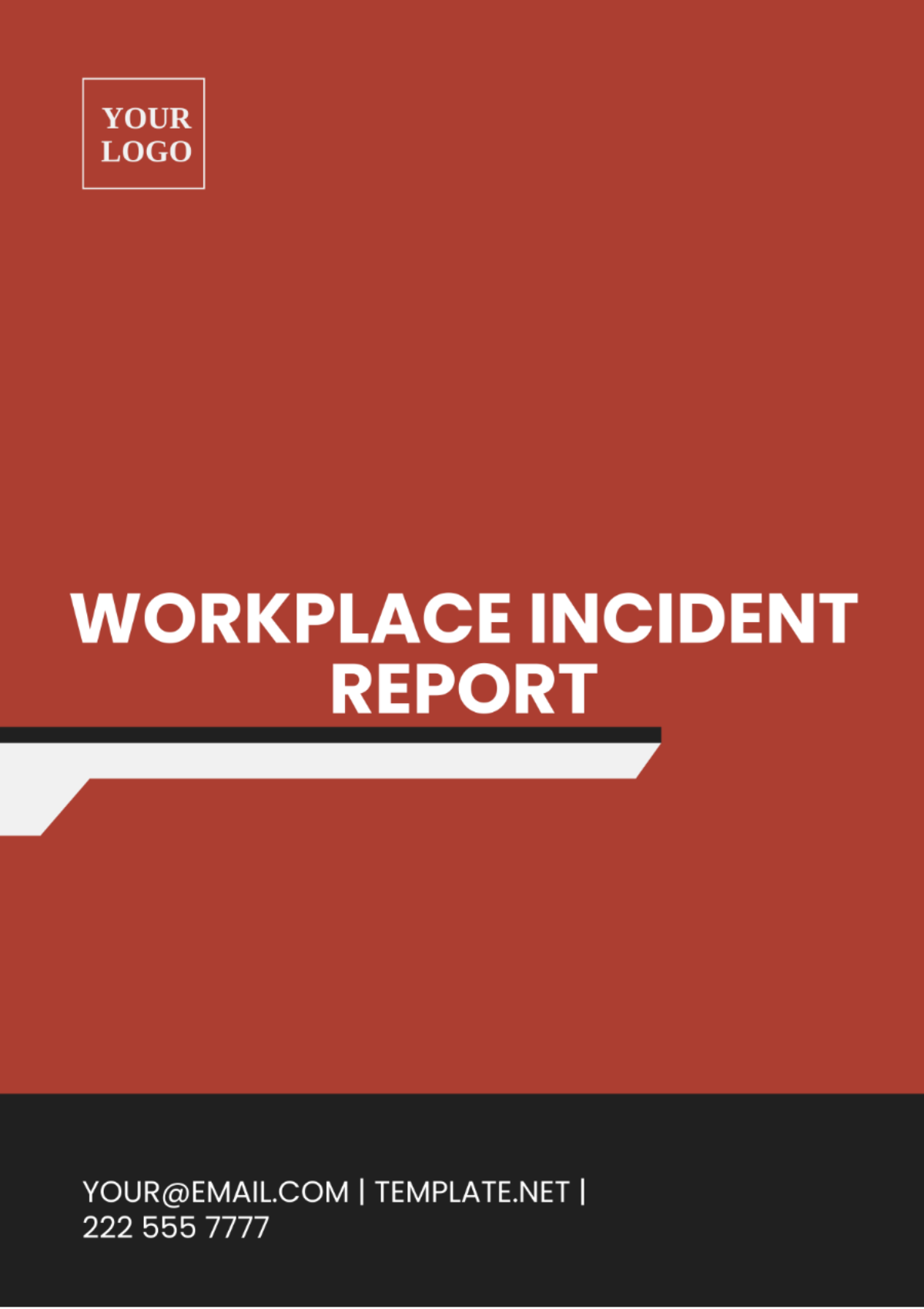
Company: | [YOUR COMPANY NAME] | ||
Prepared by: | [YOUR NAME] | Department: | [YOUR DEPARTMENT] |
I. Incident Overview
An accurate and comprehensive overview of the incident is crucial for effective documentation and subsequent analysis. This section should begin with the basic details of the incident, including the date, time, and location. Make sure to capture all relevant information that outlines the scope and impact of the event.
In further detail, describe the sequence of events that led to the incident. This narrative should be clear and precise, ensuring that all facts are reported without ambiguity. Utilize bullet points to list out critical moments for easy readability and reference.
Date of Incident: [DATE]
Time of Incident: [TIME]
Location: [LOCATION]
Brief Description: [BRIEF DESCRIPTION]
II. Affected Individuals
Identify all individuals who were affected by the incident, including employees, visitors, or any third parties. Provide detailed information about their role and their condition post-incident, if applicable. This information is essential for addressing personal safety and legal concerns, as well as for contacting next of kin if necessary.
List each individual along with a brief description of their involvement and status following the incident. Utilize a table format here to organize information systematically.
Name | Role | Status Post-Incident |
|---|---|---|
[NAME 1] | [ROLE 1] | [STATUS 1] |
[NAME 2] | [ROLE 2] | [STATUS 2] |
[NAME 3] | [ROLE 3] | [STATUS 3] |
III. Initial Response and Actions Taken
This section should elaborate on the immediate actions taken following the incident. Discuss the initial response and highlight any emergency services that were involved. Include details on any first aid provided, evacuations, or other safety measures that were executed to manage the situation.
Enumerate the steps taken in response to the incident to provide a clear action timeline. This helps in understanding the responsiveness of the team and effectiveness of existing emergency protocols.
Emergency Services Contacted: [SERVICE NAME]
First Aid Administered By: [FIRST AID ADMINISTRATOR'S NAME]
Evacuation Conducted: [YES/NO]
Other Measures: [DETAIL OTHER MEASURES TAKEN]
IV. Analysis of Incident Causes
Providing an in-depth analysis of the potential causes of the incident is essential for future prevention strategies. Investigate and report on all contributing factors, both indirect and direct. This thorough analysis helps in understanding what went wrong and how similar incidents can be prevented in the future.
Utilize this section to speculate on avoidable and unavoidable elements, and draw conclusions based on evidence collected from the incident overview and the affected individuals' testimonials. Highlight any identified lapses in safety measures in bold to emphasize points for improvement.
V. Recommendations and Follow-up Actions
Based on the analysis, propose practical measures and changes to prevent the recurrence of similar incidents. This part of the report should offer constructive recommendations for enhancing safety and protocols within [YOUR DEPARTMENT]. Emphasize the need for staff training, infrastructural changes, or policy revisions as identified.
Moreover, outline a follow-up plan to ensure that the recommendations are implemented effectively. Assign responsibilities to specific individuals or departments and set achievable deadlines for each action point.
VI. Methodology
To ensure a comprehensive understanding of the incident, the following methodology was employed:
Data Collection:
Gathered information from eyewitness accounts, CCTV footage, and any available documentation related to the incident.
Conducted interviews with involved individuals to gather firsthand perspectives.
Reviewed relevant policies, procedures, and safety protocols.
Analysis:
Analyzed collected data to determine event sequence and factors.
Conducted root cause analysis to find incident's underlying reasons.
Used analytical methods to assess the incident's effects.
VII. Conclusion:
In conclusion, our analysis has highlighted key factors contributing to the incident. It's evident that improvements are necessary to prevent similar occurrences. By implementing recommended actions promptly, we aim to enhance safety protocols and minimize risks within [YOUR DEPARTMENT]. Collaboration and commitment from all team members are essential for success. Approval and closure are pending signatures from relevant parties.
- 100% Customizable, free editor
- Access 1 Million+ Templates, photo’s & graphics
- Download or share as a template
- Click and replace photos, graphics, text, backgrounds
- Resize, crop, AI write & more
- Access advanced editor
Introducing the Workplace Incident Report Template by Template.net. This editable and customizable template streamlines incident documentation. Tailor reports effortlessly using our AI Editor Tool. Efficiently manage workplace incidents with ease. Get organized, get precise, get it done with Template.net.
You may also like
- Sales Report
- Daily Report
- Project Report
- Business Report
- Weekly Report
- Incident Report
- Annual Report
- Report Layout
- Report Design
- Progress Report
- Marketing Report
- Company Report
- Monthly Report
- Audit Report
- Status Report
- School Report
- Reports Hr
- Management Report
- Project Status Report
- Handover Report
- Health And Safety Report
- Restaurant Report
- Construction Report
- Research Report
- Evaluation Report
- Investigation Report
- Employee Report
- Advertising Report
- Weekly Status Report
- Project Management Report
- Finance Report
- Service Report
- Technical Report
- Meeting Report
- Quarterly Report
- Inspection Report
- Medical Report
- Test Report
- Summary Report
- Inventory Report
- Valuation Report
- Operations Report
- Payroll Report
- Training Report
- Job Report
- Case Report
- Performance Report
- Board Report
- Internal Audit Report
- Student Report
- Monthly Management Report
- Small Business Report
- Accident Report
- Call Center Report
- Activity Report
- IT and Software Report
- Internship Report
- Visit Report
- Product Report
- Book Report
- Property Report
- Recruitment Report
- University Report
- Event Report
- SEO Report
- Conference Report
- Narrative Report
- Nursing Home Report
- Preschool Report
- Call Report
- Customer Report
- Employee Incident Report
- Accomplishment Report
- Social Media Report
- Work From Home Report
- Security Report
- Damage Report
- Quality Report
- Internal Report
- Nurse Report
- Real Estate Report
- Hotel Report
- Equipment Report
- Credit Report
- Field Report
- Non Profit Report
- Maintenance Report
- News Report
- Survey Report
- Executive Report
- Law Firm Report
- Advertising Agency Report
- Interior Design Report
- Travel Agency Report
- Stock Report
- Salon Report
- Bug Report
- Workplace Report
- Action Report
- Investor Report
- Cleaning Services Report
- Consulting Report
- Freelancer Report
- Site Visit Report
- Trip Report
- Classroom Observation Report
- Vehicle Report
- Final Report
- Software Report
